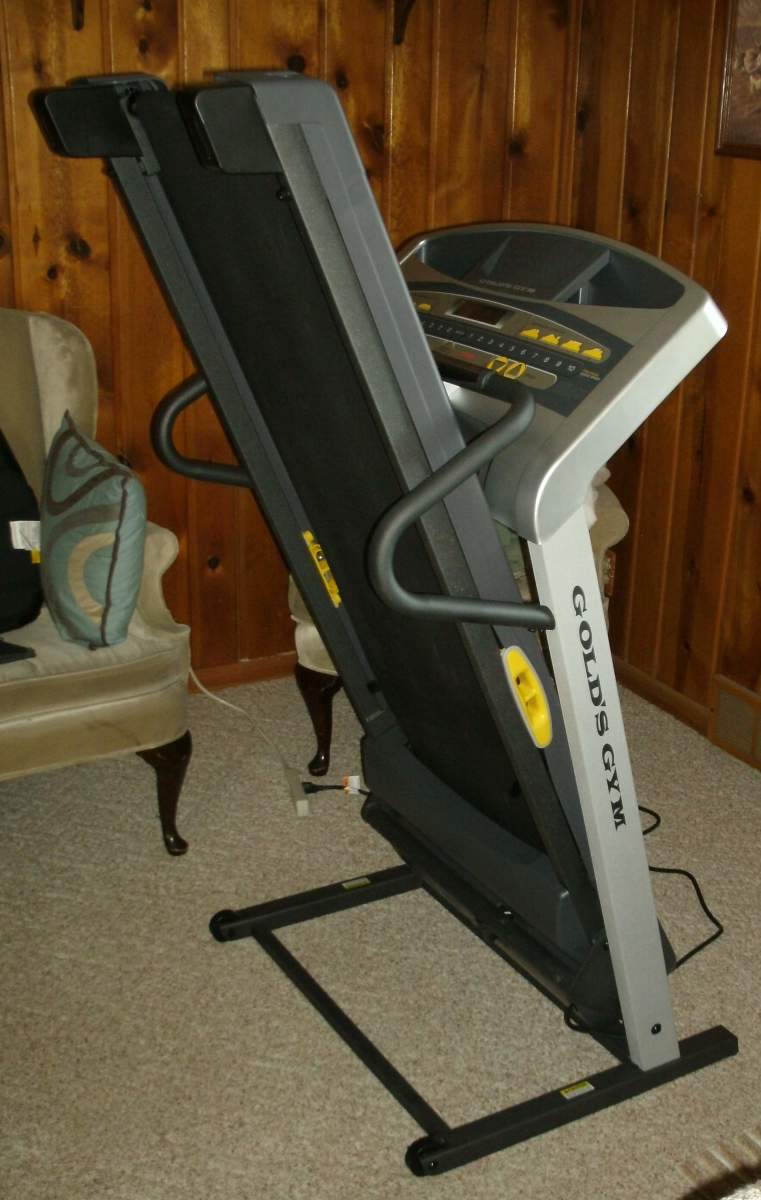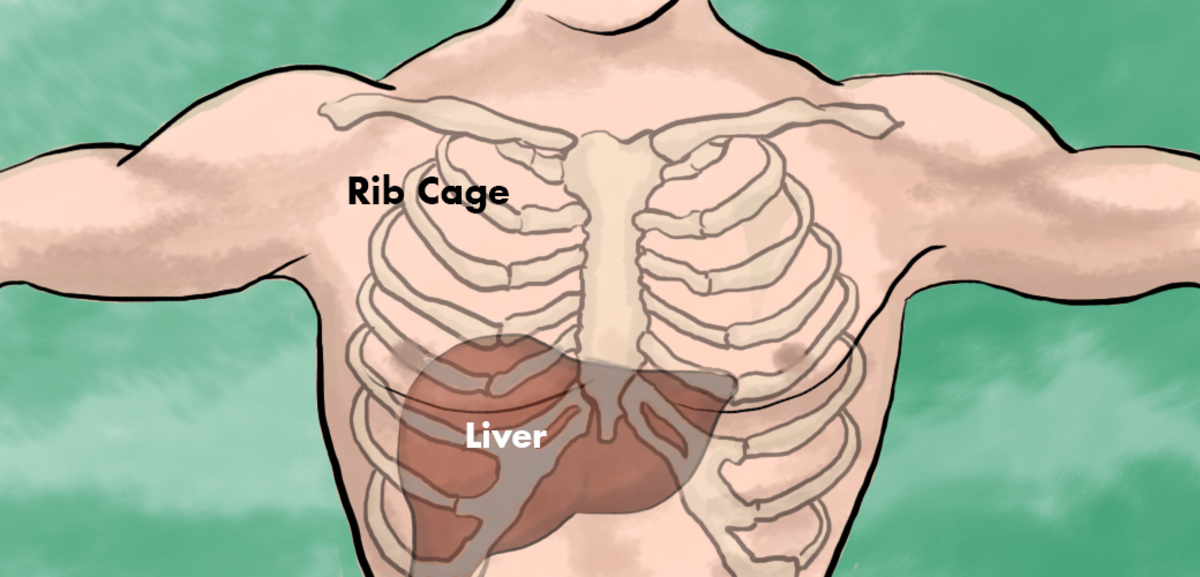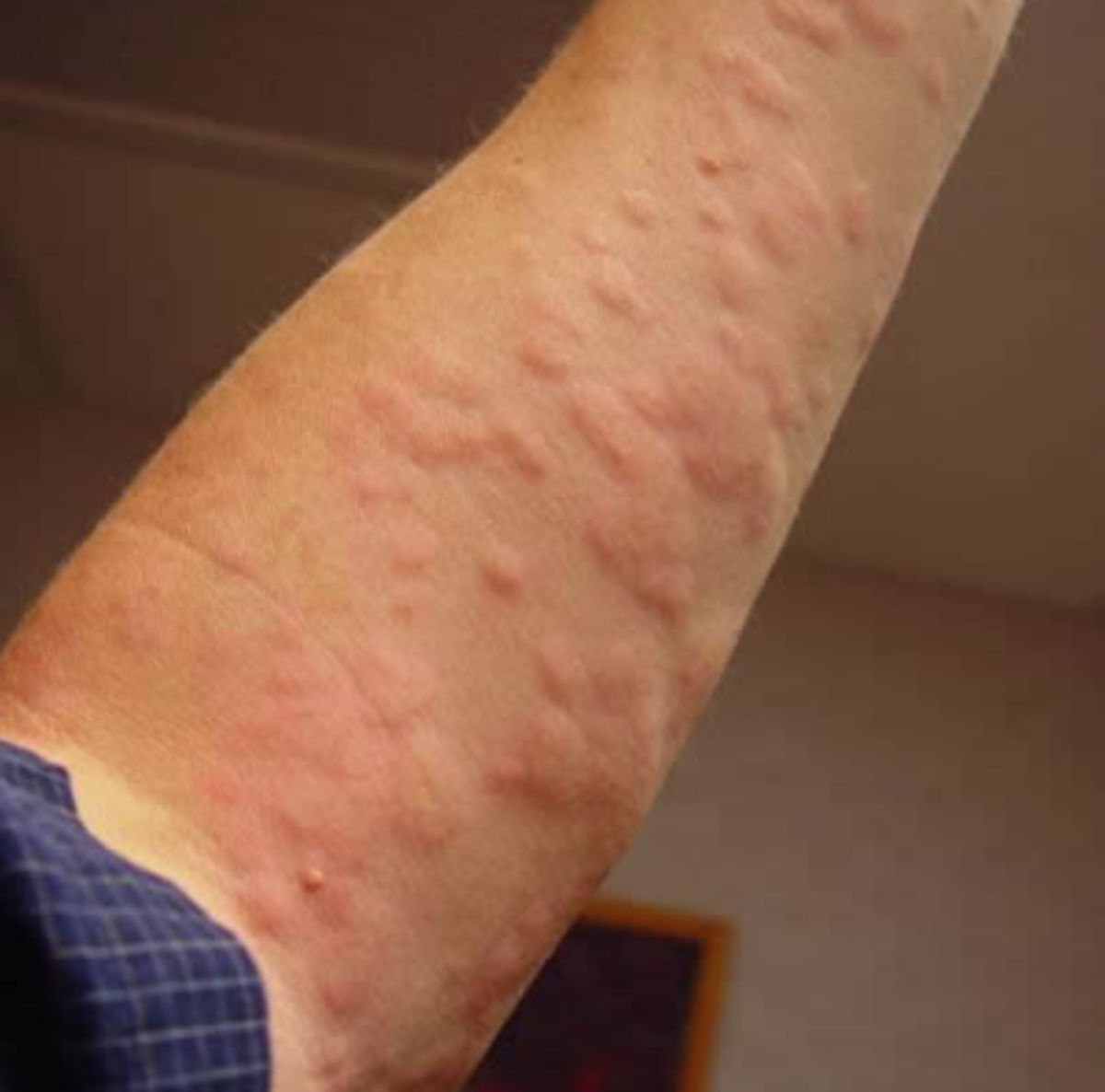Bed Bugs, Bed Bugs - Are You In Bed With Me?!?
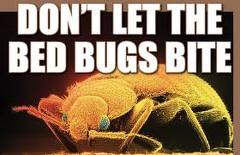
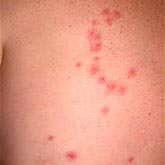
How Do I Know if I Have Bed Bugs?
This is a continuation of the original article Bed Bugs, Bed Bugs - What Are These Things?!?
Bites and Effects of Bites
If you wake up with bites on your body that look like the ones in the photo, then you may have bed bugs. If you have a bed bug infestation, the room may omit an offensive but sweet smell. There will be physical evidence such as blood or rust colored stains from crushed bed bugs on the sheets, casings or shells from the bed bugs and fecal matter where they hide.
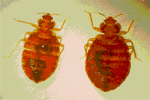
Can I Get Sick From Bed Bug Bites or Get a Disease?
When a bed bug bites, it injects its saliva into the skin which can result in inflamed, red and itchy lesions. It is quite often that bed bug bites are mistaken for mosquito bites, some types of skin conditions or even go unnoticed. In some people, bed bug bites may result in rashes.
There are four types of rashes. The first, and most common, is made up of localized red, itchy and flat lesions. The classic formation is linear in a group of three and is called “breakfast, lunch and dinner”. The second type of rash results in small lesions that are raised and are swelled. The third type of rash results in raised, red and itchy welts. The last type of rash occurs in people who are extremely sensitive to bed bug saliva where the person may develop a blood or fluid filled lump at the site of the bite.
There are no reported cases of infectious diseases transmitted from bed bug bites. However, scratching of the lesions may lead to infection. It is advised that one does not scratch or pick at the lesions but apply a topical antibiotic and/or anti-itch cream to help speed healing.
I Have Bed Bug Bites! What Do I Do?
Like mosquito bites, bed bug bites do not require any specialized medical treatment and will heal on their own. Generally, the bites will be itchy and it is advisable to not scratch them as scratching can lead to infection.
In some instances, the itching can become quite severe and it is recommended that you visit your physician who may prescribe an antihistamine to relieve the itching and an oral antibiotic to prevent an infection caused by excessive scratching.
I Don’t Have Bites But How Do I Know I Don’t Have Them?
Physically, you can see live bed bugs hiding or you can find their casings when they shed their shells. The following is an outline of where you can look for bed bugs or their shells.
Beds
In the mattresses and box springs, look in the seams, creases, tufts and folds. In the bed frame, look in the cracks and joints in the frame, head board, foot board and railings.
Couches, Sofas, Chairs and Ottomans
Look between the cushions, under the cushions, seams, creases, tufts and folds. Check in the frame of the furniture, between the joints, under the frame and holes in the frame. If you use dust covers, check under the covers and the space between the cover and the furniture.
Rugs, Carpets, Area Rugs
Lift up the carpet and look underneath. If your carpet is in place, lift up the edging and look under the edging.
Curtains
Check between the folds of the curtain and in areas of loose fabric. Bed bugs can also hide in the window frame and joints of the window frame.
Furniture, Dressers, Drawers
Furniture provides plenty of places for bed bugs to hide. Carefully check in the drawers, under the drawers, under the legs, behind the furniture, crevices and cracks within the furniture.
Other Places to Hide
Any place that affords a dark place can be a hiding spot for bed bugs. Additional places to look include baseboards, door frames, behind electrical plates, posters, and paintings, and under loose wallpaper. Bed bugs will also hide in the cracks in plaster as well as in telephones, clocks and radios.

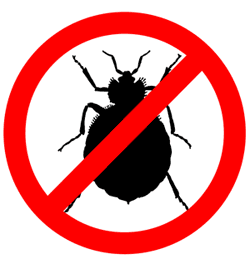
I Don’t Have Any Bed Bugs! How Can I Make Sure That I Don’t Get Them?
After thoroughly inspecting possible hiding places and proving that you do not have bed bugs, you will want to prevent bringing the bed bug home from your travels. To help prevent picking up hitchhiker bed bugs, the first thing is to be able to identify what a bed bug looks like. By familiarizing yourself to this insect, you can prepare yourself to engage other proactive actions to minimize the possibility of bringing it back home with you.
Precautions to Take When Travelling
If you are travelling and staying at a hotel, bring only what you require. Upon your arrival, inspect the room and furniture as described earlier. If there are any signs of bed bugs, request another room or move to a different hotel. The chances of another room having bed bugs in the same hotel are good considering bed bugs are travellers too.
As bed bugs like to hide in curtains, baseboards and anything along the surface of the wall, avoid placing you luggage and bags close to walls and furniture along the wall. Also avoid placing your luggage on the floor. It is advisable to place your luggage on the metal rack that is provided. If there is no option but to place your luggage on the floor or on wall furniture, and then place your belongings in a white plastic kitchen bag and secure it by tying it. Before leaving and checking out of the room, examine the white bag and its contents for bed bugs. You should also inspect your shoes, clothing and any other personal items to ensure there are no hitchhikers. Another option is to wrap your luggage in plastic, which will lower the possibility of bed bugs hiding in your luggage.
Most hotel rooms are furnished in a similar fashion, and it may be difficult to avoid furniture along the wall, including the bed. Carefully exam the bed, as described earlier, and move the bed away from the wall. After a thorough examination, tuck in all the bed sheets and ensure the blankets do not touch the floor.
Upon returning home, keep your luggage in an isolated part of your home, such as the garage. Carefully inspect your luggage for evidence of bed bugs and launder your clothing in the hottest water possible and on high heat, dry them in the dryer for a minimum of 30 minutes.
Should you encounter any live bed bugs, kill them immediately.
Precautions When at Home
Having bed bugs is not a sign of uncleanliness though regular house cleaning which includes vacuuming your mattress can help prevent an infestation. Organizing and decluttering your home is another important step as it removes many possible hiding places for bed bugs.
With today’s economy, not everyone can afford to purchase new furniture. Many are purchasing used items through advertisements or at curb side and garage sales. Always inspect the item, as discussed earlier, for signs of bed bugs. You can also ask the vendor if the items were checked for bed bugs. If the items are used clothing, wash the items in the hottest water possible and then dry at high heat in the dryer for a minimum of 30 minutes before removing.
Oh My!! I Have Bed Bugs!!! What Do I Do Now?
If you suspect or have evidence that you have a bed bug infestation, contact your local health unit which will dispatch someone to confirm that you have an infestation. If this is confirmed by your health unit, you have two options to deal with bed bugs.
The first is for you to manage the infestation by eliminating the bed bug yourself. To do this, you will have to inspect your bed and its frame in the same fashion as described earlier. Next, you will have to use the nozzle attachment on your vacuum cleaner and vacuum all crevices on your mattress, bed frame, baseboards and any furniture and object close to your bed. It is important that you empty the vacuum canister immediately and place this outside. You must vacuum daily to capture the bed bugs and their eggs. In addition to vacuuming, you must wash all your linens in the same fashion as with clothing, which was described earlier. Purchase a plastic or vinyl cover for your mattress and for your pillow as this will help eliminate the bed bugs.
As we mentioned earlier, bed bugs can hide in crevices and cracks between baseboards, window frames, door frames. It is advisable to caulk all crevices and cracks as well as openings in walls and floors where wires, pipes or other utilities come into your home. If you have wallpaper that is old and peeling, remove it or repair it to eliminate another hiding spot for bed bugs. Loose switch and electrical covers provide another hiding spot and these can be eliminated by tighting the screws on the plates to ensure a tight fit against the wall. It is important to monitor, on a daily basis the number of bed bugs that appear at night by placing sticky tape such as carpet tape or glue boards at various locations to catch bed bugs. It will be normal to see bed bugs up to ten days after you begin these steps. Should you continue to see an increase in umber of fresh and new evidence of bed bugs after 2 weeks, consult a professional exterminator to eliminate the infestation.
Bed Bugs Facts and Myths
1. Myth: Bed bugs are too small to see.
Fact: Bed bugs are not too small to see. They are good at hiding in various places throughout the house. Bed bugs can be seen with the naked eye as they are similar to an apple seed in size and appearance.
2. Myth: Bed bugs are found where poor and dirty people live, such as in shelters.
Fact: Beg bugs can be found in private homes, hotels, motels, apartments, condos, dormitories, businesses and offices. Anyone can become infested with bed bugs.
3. Myth: You will get bed bugs if you walk into a room that has bed bugs.
Fact: Unlike fleas and ticks, bed bugs cannot jump onto you. Bed bugs are night bugs where they are active at night and sleep and hide during the day. They avoid light and they do not like to be disturbed.
4. Myth: Bed bugs transmit infectious diseases.
Fact: There is no scientific evidence that bed bugs transmit infectious diseases.
5. Myth: Pesticides and chemicals will kill bed bugs.
Fact: Applying pesticide on its own will not eliminate bed bugs in all stages of development. Successful treatment combines vacuuming, steaming, laundering, sealing and inspection of articles being brought into the home. Do not use over the counter pest control products or home remedies like kerosene.
© Copyright Beth100
November 4, 2010
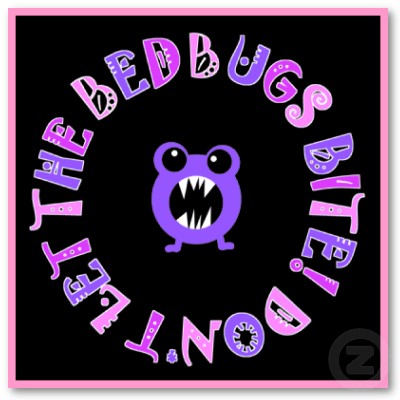
© 2010 Beth100





